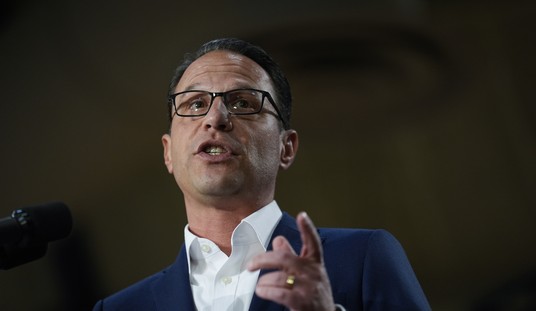For half a century, Middle Eastern countries, many with Islamic fundamentalist regimes that have financed radical jihadi terrorists while oppressing women and persecuting non-Muslims, have dominated the world’s energy markets.
More recently, Europe has been hostage to Russia for natural gas, crucial to its energy needs.
In the last decade, revolutionary oil and gas drilling technologies have enabled the United States to change things.
The Trump Administration is putting that historic development front and center during what it calls “Energy Week.”
The theme? “Energy dominance.”
The Administration hopes that phrase will replace both “energy dependence,” which the country has lived with since the 1960s, and “energy independence,” the seemingly hopeless quest of the last seven presidents.
It also hopes “energy dominance” will become more than a new talking point. It wants it to be the new reality, relegating Obama-era, climate-change alarm-driven, energy-strangling policies to history’s ash heap.
The key is unleashing vast resources of coal, oil, and natural gas, reducing obstacles to nuclear energy, and keeping other energy sources—conventional and renewable—in play.
The goal? At home, lower energy prices, robust economic growth, and more jobs. Abroad, greater American influence and reduced conflict.
Energy Secretary Rick Perry explained what the Administration means by “energy dominance” in a press briefing Monday morning kicking off “Energy Week”:
“An energy-dominant America means a self-reliant, a secure nation, free from geopolitical turmoil of other nations who seek to use energy as an economic weapon. An energy-dominant America will export to markets around the world, increasing our global leadership and influence. Becoming energy-dominant means that we are getting government out of the way so that we can share our energy wealth with developing nations.”
Recommended
President Donald Trump will unveil the Administration’s plans for energy dominance at an event at Department of Energy headquarters at 3 p.m. Thursday. Perry, Interior Secretary Ryan Zinke, Environmental Protection Agency Administrator Scott Pruitt will speak before the President in what the White House calls an “American Energy Dominance Panel.”
Energy was among topics Trump discussed Monday with Indian Prime Minister Narendra Modi. His new policies could affect India by making American clean-energy sources and technologies rapidly available to it.
Of India’s 1.34 billion people, roughly 300 million—almost the entire population of the United States—have no electricity. Many more have it only intermittently.
India generates 70 percent of its electricity from its abundant domestic coal supplies. Installing high-tech scrubbers, which India could import from America, to remove pollutants like fly ash, sulfur dioxide, nitrous oxides, carbon monoxide, and toxic heavy metals would reduce air pollution in India’s densely populated cities.
But India could import more than scrubbers for coal plants. It could also import LNG from America because the Trump Administration has removed export barriers.
Trump’s policies could apply similarly to China, which, like India, depends heavily on coal and suffers serious air pollution.
The energy dominance theme encapsulates many of the Administration’s actions, past and future, to free up American energy production:
- repealing or revising Obama-era fracking regulations;
- rescinding the Clean Power Plan;
- withdrawing from the Paris climate accord;
- authorizing the Keystone XL and Dakota Access pipelines;
- expanding offshore oil and gas production;
- ending a moratorium on coal leasing on federal lands;
- terminating Obama-era climate-change guidance to federal agencies;
- rescinding and revising “social cost of carbon” calculations that became the rationale for curbing the use of fossil fuels.
There is much to celebrate in this basketful of policies. The more they’re implemented, the lower energy prices will be for Americans.
That means lower cost of living for everyone, especially the poor, who spend a higher percentage of their income on energy than others. It also means lower operating costs for business, especially energy-intensive heavy manufacturing, which means higher employment and higher production.
Together these should cause more robust economic growth, which means higher tax revenues despite lower tax rates, making it possible to whittle down the national debt, a burden unjustly placed on coming generations.
The Administration’s turn away from letting fears of dangerous manmade global warming dictate energy policy is particularly welcome. The fears rest solely on computer climate models that predict two to three times observed warming. While human contribution to climate change is surely real, it is just as surely much smaller than previously thought, with correspondingly smaller risks. Meanwhile, the benefits of fossil fuel-based energy are enormous.
There are also benefits to other nations.
The new policies would open the way for coal, liquefied natural gas (LNG), and soon oil exports to Europe, India, and elsewhere. These would make the United States a net LNG exporter by next year and a net energy exporter in four years—a first since 1953. They would also reduce those regions’ dependence on Russia and the Middle East for energy, shifting geopolitical allegiances and reducing funding to terrorists.
But there are also reasons for complaint.
First, while the Administration talks of reducing subsidies to various energy industries, it doesn’t envision eliminating them. That means government, driven by all kinds of perverse political rather than wise economic incentives, will continue picking winners and losers rather than letting the market determine the best allocation of resources.
Second, it persists in assuming that “clean energy” means energy with low or no carbon dioxide emissions. So it boasts of promoting extremely expensive, technologically doubtful “carbon capture, utilization, and sequestration” as the key to “clean coal.”
But CO2 isn’t “dirty.” It’s odorless, colorless, and non-toxic at over twelve times its present atmospheric concentration. We couldn’t push it to one-fourth that level even if we burned all the world’s fossil fuels tomorrow.
CO2 is indispensable to plant growth, and plants grow better—and crop yields rise—as we add it to the atmosphere.
Its warming effect is probably real but so slight as to be undetectable. The benefits of the energy we get while using the fuels that emit it, and of the enhanced crop yields, outweigh any risks from that minuscule warming effect.
The Administration that was brave enough to pull us out of the Paris accord and embrace “energy dominance” should be brave enough, too, to pronounce a not-guilty verdict on carbon dioxide.

























Join the conversation as a VIP Member